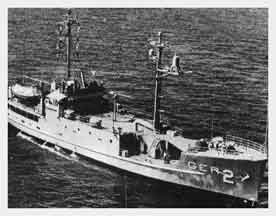1968 Pueblo Captured
The U.S.S. Pueblo, an American intelligence- gathering vessel, was captured by the North Koreans on January 23, 1968. The North Korean charged that the vessel was within their territorial waters, a charge denied by the U.S. The crew was eventually released but the ship was not.
The USS Pueblo, a Banner-class environmental research ship, was commissioned by the U.S. Navy, but it was later converted into an intelligence-gathering ship by the National Security Agency.
On January 23, 1968, while the USS Pueblo was on a surveillance mission in the Sea of Japan, it was intercepted and captured by North Korean naval vessels. North Korea accused the ship of violating its territorial waters, a claim that the U.S. vehemently denied, insisting that the ship was in international waters.
The incident escalated into a major international crisis. The crew of the USS Pueblo, comprising 82 American sailors, including the commanding officer, Lieutenant Commander Lloyd M. Bucher, was detained by North Korea. They were subjected to harsh treatment and interrogation by the North Koreans.
The U.S. reacted strongly, demanding the immediate release of the crew and the ship. It mobilized its military forces in the region, but stopped short of military retaliation. The crisis dragged on for nearly a year, during which time the U.S. engaged in extensive negotiations with North Korea, both directly and through the mediation of third parties.
Finally, in December 1968, after a formal U.S. apology, an admission that the ship was spying, and a promise that the U.S. would not spy in the future, the North Korean government released the crew. These statements were repudiated immediately afterward by the U.S. government.
While the crew members were released and allowed to return to the United States, the USS Pueblo itself was not returned. It was taken to the port of Pyongyang and moored there as a museum ship, where it remains to this day. The U.S. still officially maintains that the USS Pueblo is a commissioned vessel of the U.S. Navy, making it a unique case in naval history.
 >
>